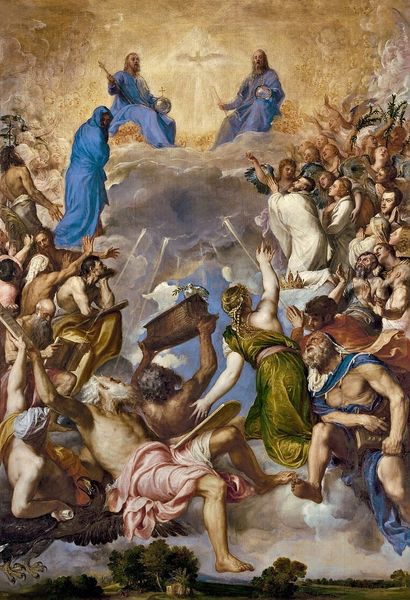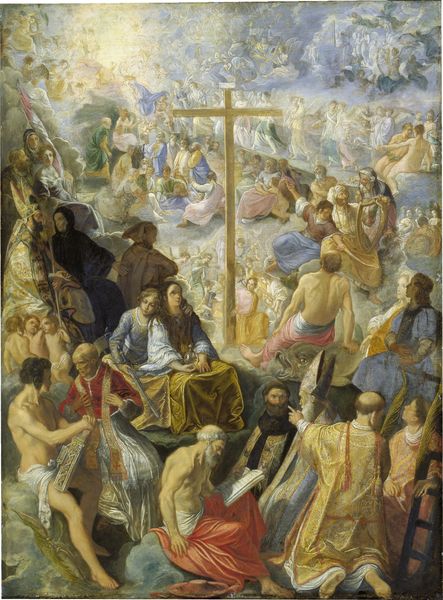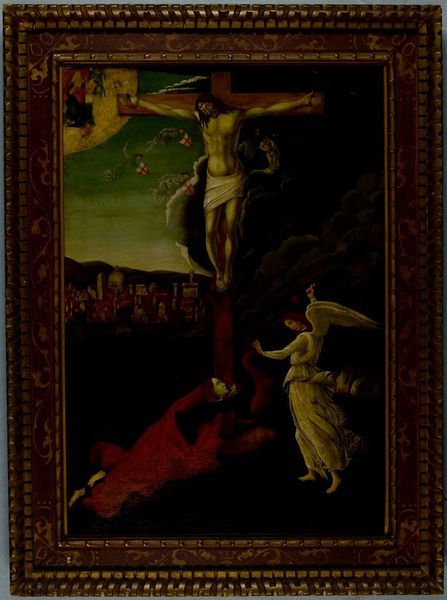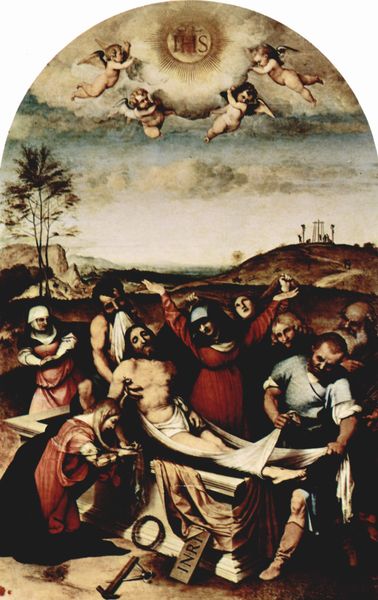
painting, oil-paint
#
narrative-art
#
painting
#
oil-paint
#
mannerism
#
figuration
#
oil painting
#
chiaroscuro
#
history-painting
Copyright: Public domain
Curator: Here we have "Descent from the Cross," an oil painting by Alessandro Allori. Editor: It’s... dynamic. The twisting bodies, the flurry of gestures—it feels intentionally chaotic, a swirling vortex pulling the eye around the canvas. Curator: Yes, precisely. The Mannerist style favors that sense of dynamism, doesn't it? Note how Allori employs chiaroscuro, that dramatic contrast between light and dark, to sculpt the figures and heighten the emotional intensity. The composition eschews classical balance for something altogether more… theatrical. Editor: I'm curious, though, about this staging. The figures are all crammed into the foreground. There’s a palpable sense of distress among the crowd—it seems to reflect the cultural upheaval of the late Renaissance, right? The rigid dogmas being questioned... Curator: Undeniably, context is vital. Allori’s patrons would have viewed this scene through a lens of religious devotion, undoubtedly. Yet, consider the surface. The paint is applied with such a meticulousness, almost obsessive, that the subject becomes, perhaps paradoxically, secondary. Editor: I disagree to an extent, that its surface quality renders its subjects as secondary. I see the painting more so representing a shift toward heightened emotional expression, mirroring societal anxieties of the time through exaggerated forms and a clear rejection of High Renaissance ideals of harmony and proportion. The compressed space adds to the claustrophobia, a sense of a world closing in. Curator: An astute observation. Though the rendering certainly holds its own sway on the narrative; such rendering, though serving devotional or documentary function, has been upended. The focus becomes instead line and musculature, each character is an ode to figuration—nearly godlike in depiction. Editor: This close reading is definitely giving me an appreciation for Allori's command. His use of figures, and in particular, the human figure, to capture not just a historical event, but also the emotional turbulence that accompanies the passing of a historical age? Incredible. Curator: Agreed. The surface becomes an integral character unto itself, almost divorced from subject, that amplifies the emotional undercurrents—and invites, perhaps compels, endless re-visitation.
Comments
No comments
Be the first to comment and join the conversation on the ultimate creative platform.













